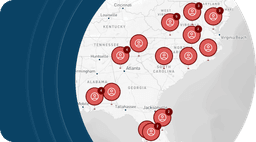Loading animation...
Use cases
Contact center
Automate step-up authentication user journeys with continuous identity certainty in the contact center. Stop Gen AI, cloning, and deepfake attacks in their tracks.
overview
Complete and continuous identity risk coverage
The opportunity
Make confident, real-time risk decisions with flexible workflows, multi-solution step-up authentication, and robust account takeover prevention no matter the attack vector.
>85%
email and phone verification coverage
>98%
accuracy in physical ID verification
99.9%
selfie reverification accuracy
Loading...
Socure call center FAQ answers
1. How can call center fraud be prevented?
2. How do you identify call center fraud?
3. What are the consequences of call center fraud?
4. What actions can businesses take to defend against call center fraud?
5. How can Socure's solution minimize call center fraud?
6. How does Socure provide authentication through a complete customer session with a call center?
Let us prove it.
Scale your organization with confidence.


